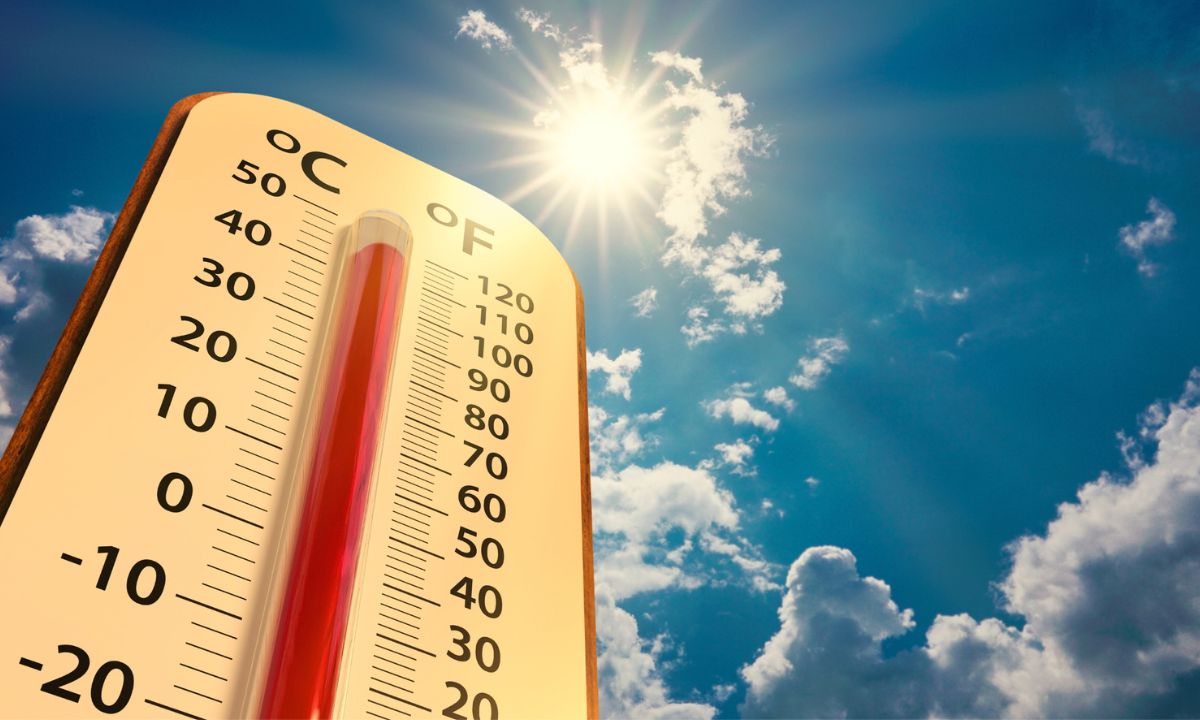Last School Year Was the Hottest on Record. How Do We Protect Students?
DeMio: Scorching temperatures and cuts to government funding for cooling and ventilation systems are putting children's learning and lives at risk.

As spring showers give way to rising temperatures, teachers and families across the country are bracing for another record-breaking hot summer — and this time, they’re heading in with even fewer resources and protections. A slew of funding cuts from the Trump administration impact everything from school heating, ventilation and air conditioning (HVAC) systems to air quality control, meaning students will be relying even more heavily on state and local policymakers, parents and educators to keep them safe from the severe and potentially deadly effects of extreme heat throughout the summer and into the 2025-26 school year.
While extreme heat endangers everyone, children are particularly vulnerable. Kids’ bodies heat up faster and aren’t as efficient as adults’ at regulating temperature. Children also tend to spend more time outside and rely on adults to make sure they stay hydrated and take breaks from the sun. These factors put them at risk of excessive exposure, which can lead to heat-related injuries and short- and long-term health issues, including asthma, heart disease and diabetes. It can disrupt their learning and development. Unchecked, it can even kill.
Schools should be safe spaces for students to flourish, but many buildings — particularly in low-income neighborhoods and rural communities — are ill equipped to protect young people from extreme heat. The average American school building is nearly 50 years old, and an estimated 41% of districts don’t have adequate HVAC systems in at least half of their schools, leaving students vulnerable to extreme heat and poor air quality.
As the climate gets hotter, communities that previously didn’t need air conditioning are now faced with more frequent, long and intense heat. Studies estimate that more than 15,000 public schools that historically didn’t need cooling systems must now install them, costing up to $40.5 billion and impacting over 8 million students. For many older buildings, installing air conditioning requires additional renovations to support a new HVAC system. Yet many schools don’t have the budgets for these costly renovations.
But without adequate environmental systems, students and staff face increasingly dangerous conditions and school closures, both of which affect the quality of teaching and learning. From Pennsylvania to Arizona, kids felt these impacts throughout the 2024-25 school year. In just the first week of class, Philadelphia had to send students home early from 63 schools that weren’t prepared for the heat. In March, Phoenix -area schools were already enforcing heat protocols to keep kids safe, a result of unusually high temperatures and a new normal of hotter school days.
Ensuring that students can learn and thrive in safe environments requires policies that increase funding for school infrastructure. But the Trump administration and congressional Republicans are making moves that put more students at risk. For example, in March, the administration abruptly rescinded over $2.5 billion in funds to help public schools address the impacts of the COVID-19 pandemic, including money that was paying to update or install HVAC systems. Now, many schools are no longer able to finish these projects — putting them back at square one.
Alongside this loss of funding, House Republicans’ budget reconciliation bill would terminate the energy credit for geothermal heat pumps earlier than provided under the Inflation Reduction Act — meaning schools would lose credits toward energy-efficient heating and cooling systems. The bill would also defund programs that monitor air quality in schools, which allow school leaders to make informed decisions that keep kids and teachers safe.
In addition, the Trump administration has eliminated staff and proposed massive funding cuts to the National Oceanic and Atmospheric Administration, the agency responsible for monitoring climate, weather, oceans and coasts. NOAA is also the parent agency to the National Weather Service, the key source of reliable forecasting. Gutting these pivotal agencies means it will be even more challenging for schools, families and local officials to prepare for extreme heat and provide protective measures for children.
Kids need policymakers to take actions that keep them safe instead of dismantling existing supports. To do so, state officials first need to better understand the conditions of their schools’ infrastructure through needs assessments and surveys. In the meantime, families and those working with children could benefit from clear guidance from state and local governments on heat safety standards that protect kids, similar to those focused on safeguarding workers. Districts could also use help navigating existing resources, such as applications for state and federal grants, that tend to be overly complicated and confusing.
But ultimately, making sure all students have access to safe and healthy schools will take large federal investments dedicated to modernizing buildings’ infrastructure. This needs to happen fast, before kids return to class for another inevitably hot school year.
Meanwhile, over the summer, parents and providers should call on their local policymakers to implement communitywide climate resilience projects so kids can enjoy their break safely. These should include equipping public transportation and community spaces with energy-efficient cooling, installing and maintaining water fountains, planting trees to increase shade and equipping playgrounds with heat-resistant materials.
It’s past time to invest in programs that provide safe and healthy learning environments for children. Following the hottest school year on record, it’s critical that policymakers at all levels take big actions to protect children from the changing climate — not throw away the programs and agencies that provide support. If they don’t act soon, students will be forced to spend yet another school year in risky buildings that endanger their academic achievement, health and development.
Get stories like these delivered straight to your inbox. Sign up for The 74 Newsletter

;)
